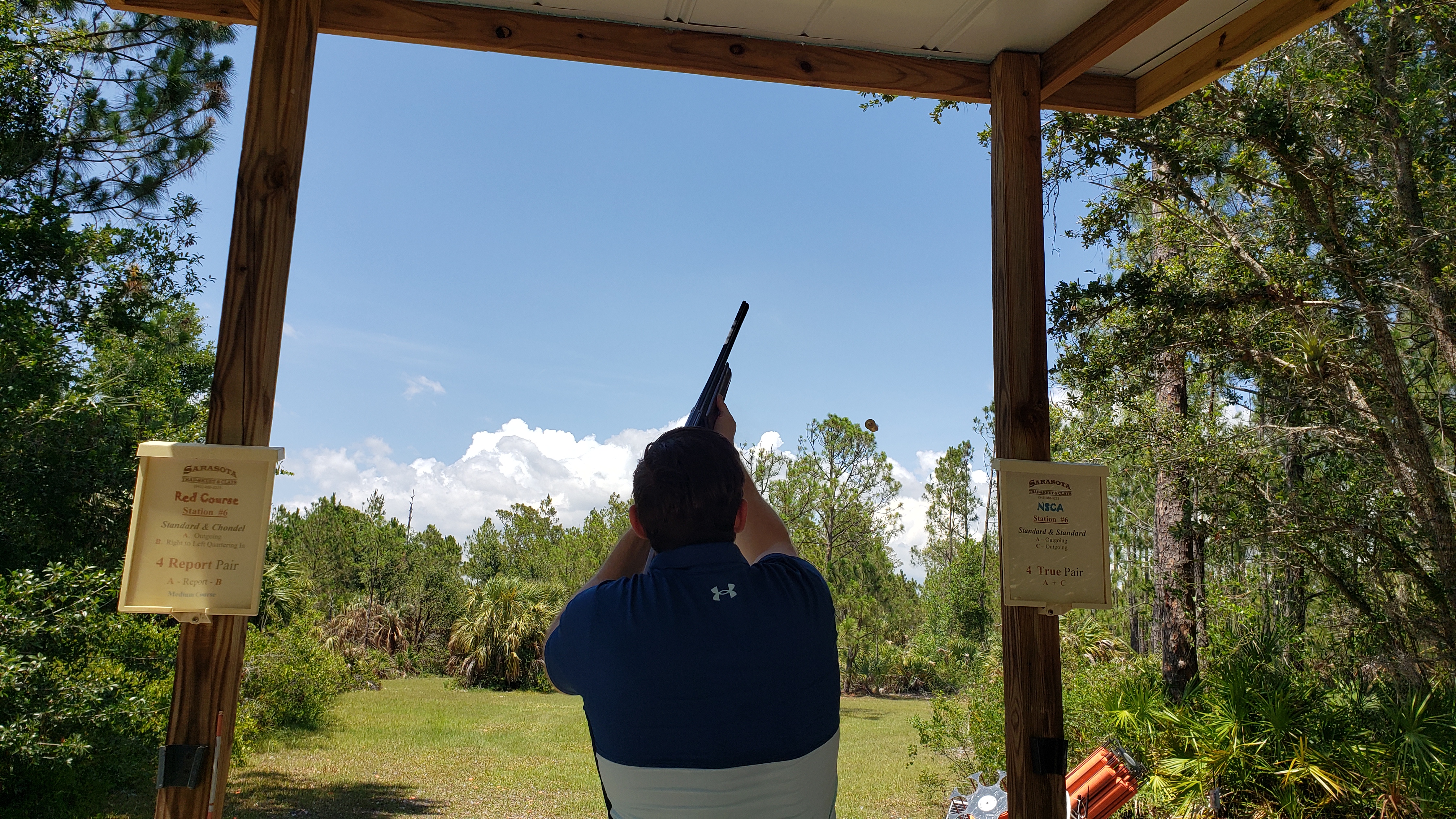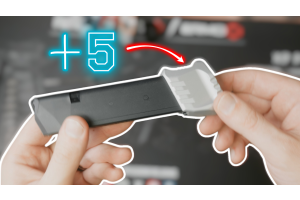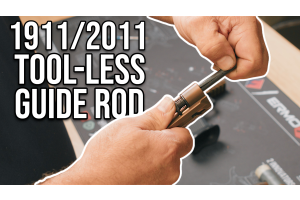
Trap Shooting 101: Everything You Need to Know to Get Started
0%
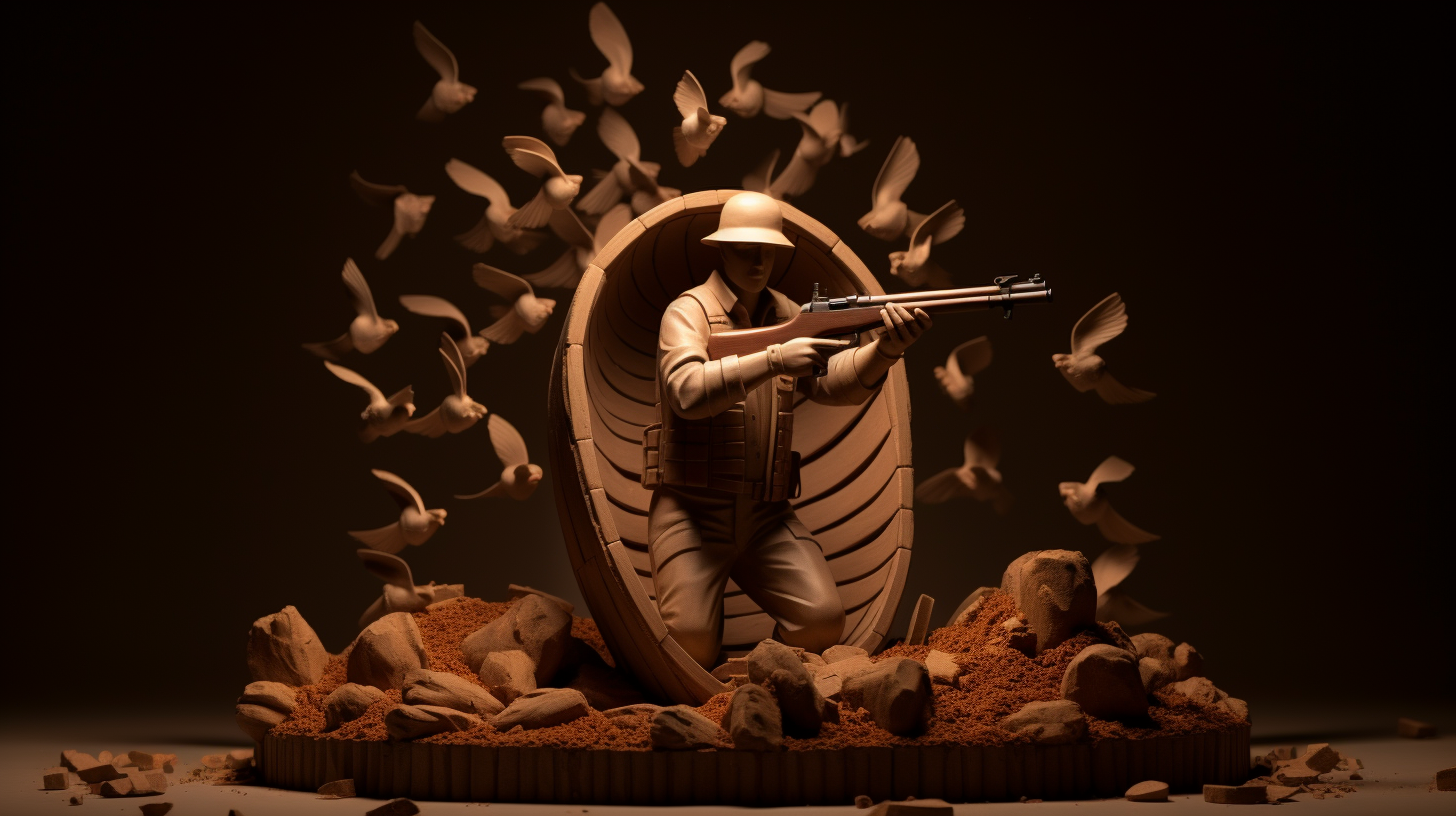
Ever wanted to feel the thrill of hitting a moving target, the satisfaction of perfecting your aim and witnessing a direct hit? Welcome to the exhilarating world of trap shooting! This blog post is designed to introduce you to trap shooting, a sport that combines precision, timing, and skill in a truly dynamic way. Let’s embark on this thrilling journey together!
Short Summary
- Experience the thrill of trap shooting with understanding, competitions, essential equipment and mastering techniques!
- Excitingly explore local ranges & clubs to join competitive leagues and understand etiquette for a thrilling competition experience.
- Sharpen your skills by determining eye dominance & using confidence building strategies for maximum success!
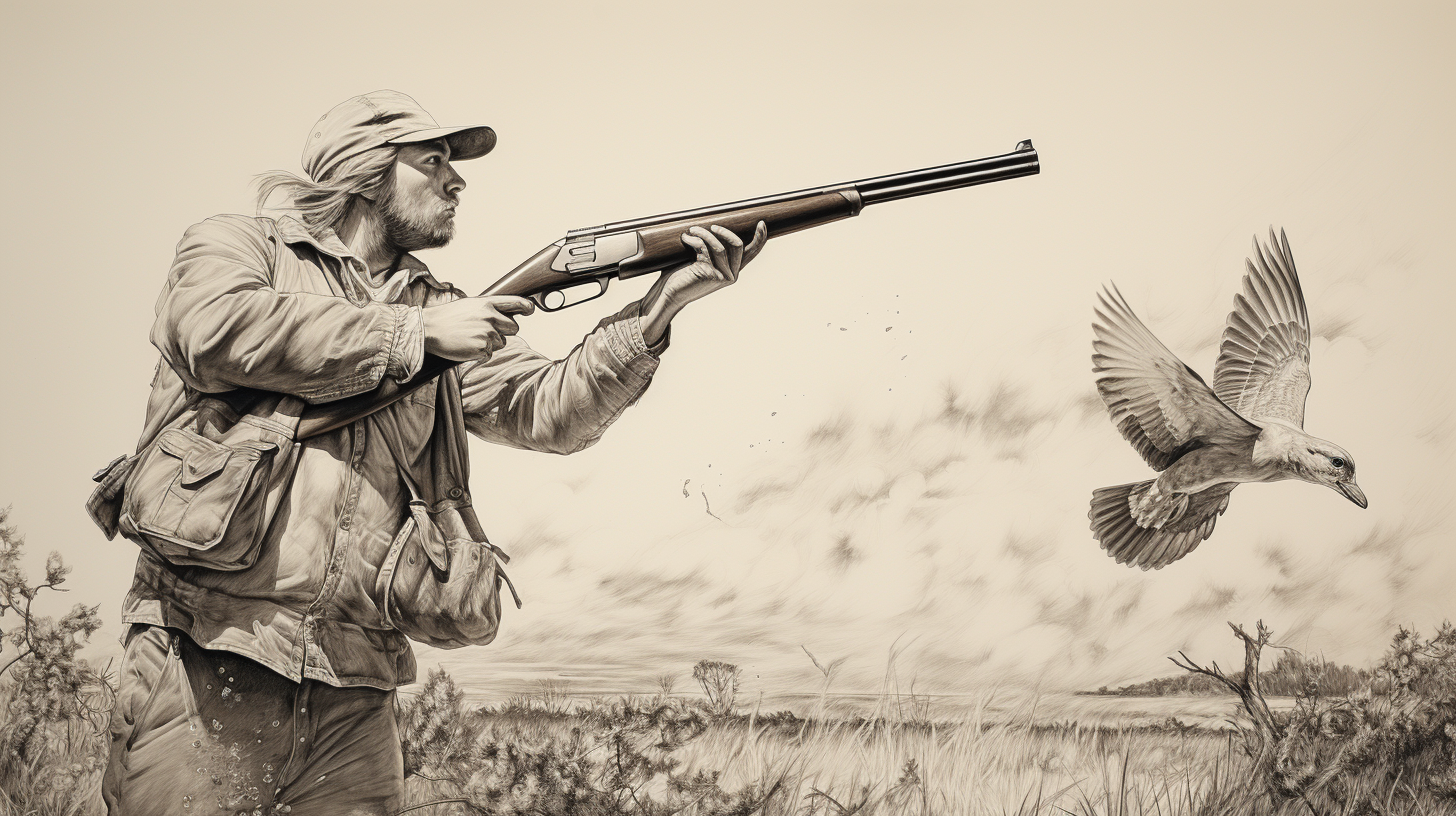

Understanding Trap Shooting
Trap shooting, also known as shoot trap, is an exhilarating sport where trap shooters use trap guns to hit clay targets that are launched into the air at varying angles from a single oscillating machine, or trap house. This sport, which has evolved from a practice exercise for bird hunters, is now a popular competitive and recreational activity.
A round of trap shooting involves firing a total of 25 shots per round at targets launched into the air at varying angles. The targets, also known as “pigeons” or “birds,” are thrown from a machine that oscillates from left to right, providing a thrilling unpredictability to the direction of the clay bird’s flight. As the shooter calls for the target, they must be prepared for the challenge of hitting the moving clay bird.
In essence, trap shooting is a test of accuracy, speed, and the ability to predict the trajectory of the clay target.
The Evolution of Trap Shooting
The origins of trap shooting, a popular form of bird hunting, can be traced back to the late 18th century, when live birds were used as targets, released from under hats. As the sport evolved, live birds were replaced with glass balls and eventually clay targets, also known as “clay pigeons”. These changes not only made the sport more humane, but also added a new level of excitement and unpredictability.
The equipment used in trap shooting has also evolved over time, from the use of single-barreled and double-barreled shotguns to the introduction of more specialized target-type shotguns. From its humble beginnings as a practice activity for bird hunters, trap shooting has grown into a competitive sport with global appeal, even becoming an Olympic sport.
Types of Trap Shooting Competitions
Trap shooting has diversified into several exciting variants, each with unique rules and challenges. The most common types of trap shooting competitions include:
- American Trap
- International Trap (also known as “Olympic Trap”, “Bunker”, “Trench”, or “bunker trap”)
- Other regional variants like Down-The-Line (DTL) and Double Trap.
In American Trap, there are three categories: singles, doubles, and handicap, with shooters positioned further back after each perfect round is shot. On the other hand, International or Olympic Trap offers an added thrill with targets thrown at varying speeds and from 15 fixed-angle machines rather than a single oscillating machine.
These different types of competitions cater to a wide range of skill levels and preferences, making trap shooting an accessible sport for many.
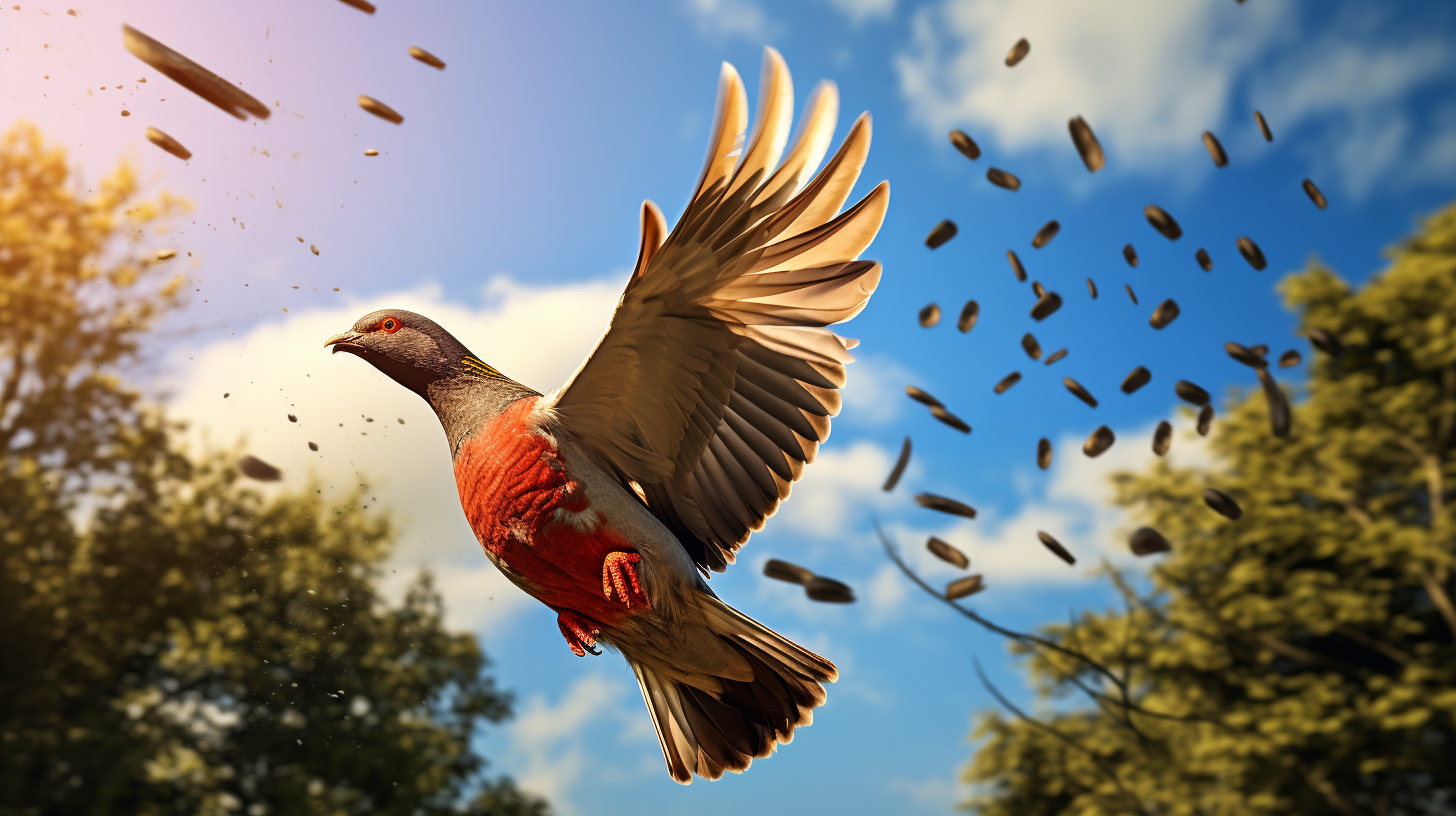

Essential Equipment for Trap Shooting
Just like any other sport, trap shooting requires the right equipment to ensure safety and maximize performance. This includes a suitable shotgun, the right ammunition, and essential protective gear. General-purpose shotguns and specialized target-type shotguns are both commonly used in trap shooting. These can have either single or double barrels. The most commonly used gauge for these shotguns is the 12 gauge.
As for ammunition, 12-gauge shells are typically used. However, different types of trap shooting may require different types of ammunition, such as lead shot or steel shot. Lastly, protective gear such as eye and ear protection is absolutely essential for safety during trap shooting.
Now let’s delve deeper into these essential pieces of equipment.
Choosing the Right Shotgun
Choosing the right shotgun is critical for accurate and responsive shooting. General-purpose and target-type shotguns are both used in trap shooting. Users can choose from double-barreled or single-barreled designs. These shotguns typically have long barrels with a weight-forward balance, and a pattern higher than other shotguns.
For competitive shooting, a shotgun tailored specifically to trap, skeet, or sporting clays is highly recommended. It’s also important to ensure that the shotgun fits you properly. Here’s how to check if the aim is correct.
- Close your eyes and raise the gun to your face and shoulder.
- Once you have done this, open your eyes and check if the aim is correct.
- If you line up two beads, one on the rib of your gun, it should fit properly.
- The beads should be directly in alignment to ensure a right fit.
Ammunition Selection
When it comes to ammunition, the typical choice for trap shooting is 12-gauge shells. However, depending on the specific rules of the competition or the requirements of the shooting range, other types of ammunition such as steel shot may be required. The type of ammunition used can affect the shot’s velocity and payload weight.
In trap shooting, the velocity is limited based on the shot mass, with regulations specifying the maximum velocity for different payload weights. Selecting the appropriate ammunition is crucial to achieving the desired performance in trap shooting.
Protective Gear and Accessories
Safety is paramount in trap shooting, and that’s where protective gear comes in. Essential safety items include eye and ear protection, which shields the shooter from the loud noise of the gun and any possible debris. Additionally, many shooters find a shooting vest helpful. These vests typically have pockets that can hold at least two boxes of shells, providing convenient access to ammunition during shooting sessions.
Other useful accessories include a recoil pad to mitigate the impact of the gun’s recoil and a shooting glove to provide a better grip. Remember, the right gear not only increases safety, but also enhances performance.
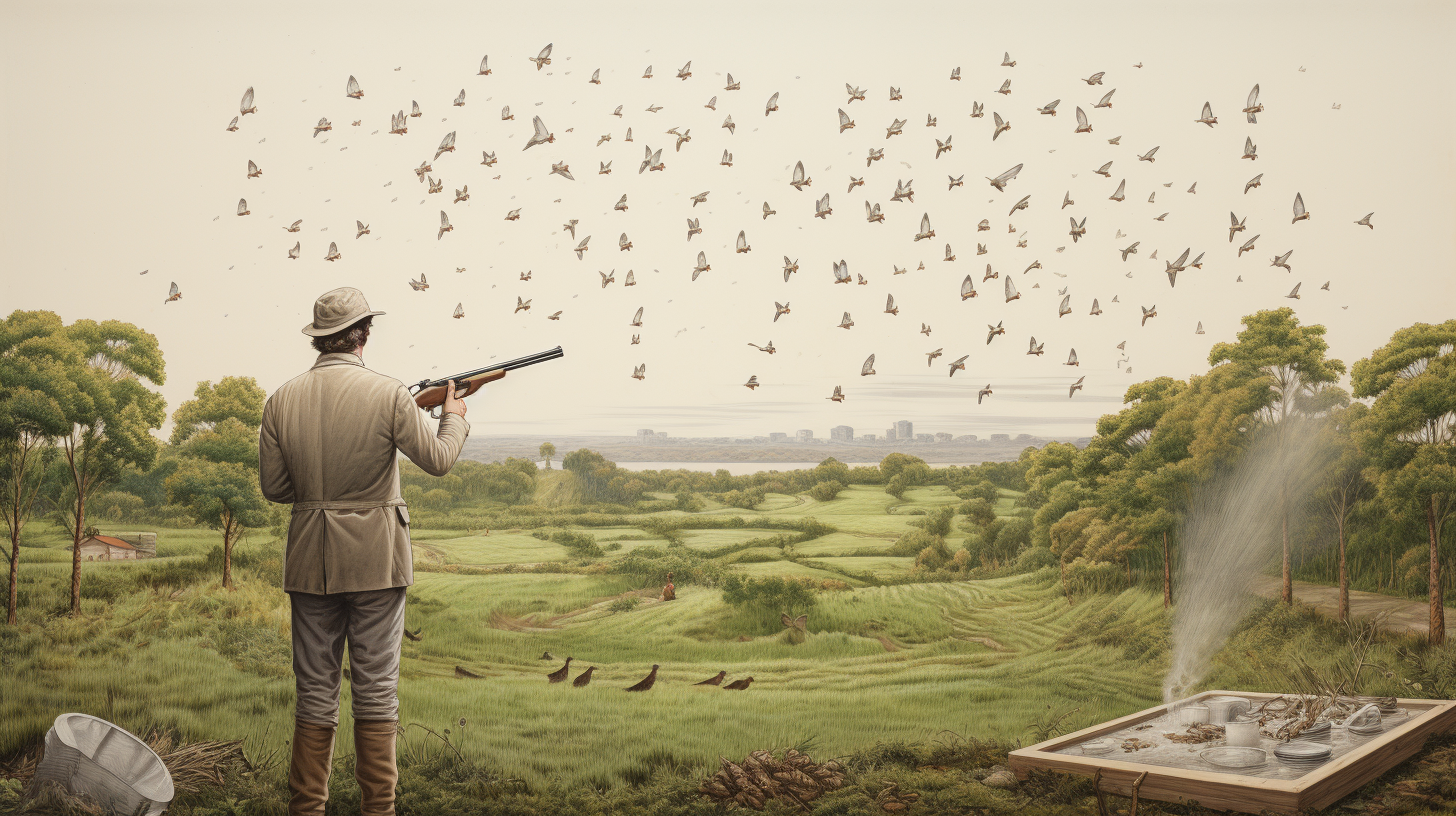

Mastering Trap Shooting Techniques
Trap shooting is about more than just pulling the trigger. It requires a combination of techniques, from the way you stand and aim to the way you swing your shotgun. Mastering these techniques is key to improving your performance and hitting more targets.
Let’s delve into these techniques to help you enhance your trap shooting skills.
Establishing Your Stance
A proper stance forms the foundation of a successful shot in trap shooting. Here are some key points to remember.
- Your front foot should be pointing towards the kill zone.
- Your body should be slightly bent forward at the waist.
- Your feet should be about shoulder-width apart.
- Your stance should feel comfortable and relaxed with no exaggerated angles.
- To maintain balance while shooting, rotate evenly from the waist. Remember, a stable and well-balanced stance can contribute to a more accurate and consistent shot.
Aiming and Focusing
Aiming and focusing are crucial for hitting the fast-moving clay targets in trap shooting. One important aspect of this is determining your dominant eye, which is the eye that you naturally use to focus on a target. You can determine your dominant eye by:
- Creating a small triangle with your hands and centering it on a distant object with both eyes open.
- Closing one eye at a time.
- The eye that keeps the object in view is your dominant eye.
- This understanding of eye dominance can help you aim and focus more accurately during trap shooting.
Developing a Smooth Swing
Lastly, developing a smooth swing is crucial for successful trap shooting. This involves:
- Moving your gun in a single, smooth, and rounded action
- Maintaining a consistent stance and mount
- Keeping your face on the stock
- Squeezing the trigger at the right moment
These techniques can contribute to a more effective swing.
Remember, a smooth and controlled swing can greatly improve your chances of hitting the target.
Preparing for Trap Shooting Competitions
Now that you’ve got the basics down, you might be wondering how to take your newfound skills to the next level. That’s where trap shooting competitions come in. These exciting events offer a chance to test your skills against other shooters and gain valuable experience.
In this section, we’ll provide some tips for preparing for trap shooting competitions, including finding local ranges and clubs, joining competitive leagues, and understanding the etiquette and practices expected at these events.
Finding Local Ranges and Clubs
Before you can compete, you’ll need to find a place to practice and potentially participate in competitions. This is where local ranges and clubs come in. These facilities often offer trap shooting ranges and may even host competitions.
You can find local ranges and clubs by checking online or asking around in your local community. Remember, practicing at a range not only provides a safe and controlled environment for shooting, but also offers a chance to meet and learn from other shooters.
Joining Competitive Leagues
If you’re looking to take your trap shooting to the next level, joining a competitive league can be a great move. Leagues offer a structured environment for competition and provide opportunities to compete against shooters of similar skill levels. You can join competitive leagues through organizations like the Amateur Trapshooting Association or by checking with your local gun club or shooting range.
Being part of a league can not only help improve your skills, but also provide a supportive community of fellow trap shooting enthusiasts. This can be a great way to make friends and learn from more experienced shooters. Joining the Community.
Etiquette and Practices
When participating in trap shooting competitions, it’s important to be aware of the specific etiquette and practices that are expected. This includes:
- Respecting the rhythm of a squad timing between shots
- Avoiding disruptive behavior like idle chatting between shots
- Adhering to safety protocols and competition rules
Proper etiquette not only ensures a smooth and enjoyable experience for all participants, but also promotes safety and sportsmanship.


Trap Shooting vs. Other Clay Shooting Sports
Trap shooting is just one of several clay shooting sports, each with its unique challenges and thrills. Other popular clay shooting sports include skeet shooting, and sporting clays. While they all involve shooting at clay targets with a shotgun, the rules, equipment, and strategies can vary significantly.
Let’s take a closer look at these other clay shooting sports and see how they compare to trap shooting.
Skeet Shooting: Crossing Targets
Skeet shooting, a form of clay target shooting, is another popular clay shooting sport that involves hitting two clay targets that are crossing one another. Unlike trap shooting where targets are launched away from the shooter, skeet shooting launches targets from two different height towers, simulating the shots upland hunters encounter in the field.
This criss-crossing of targets adds an extra layer of complexity and excitement to the sport.
Sporting Clays: Dynamic Courses
Sporting clays, often referred to as “golf with a shotgun,” offers a dynamic and varied shooting experience. Unlike trap shooting, which has a structured course, sporting clay courses meander through woods and fields, presenting the shooter with a wide variety of target presentations. This variation in terrain and target types makes sporting clays an exciting challenge for shooters of all levels.
Sporting clays is a great way to hone your shooting skills and have fun at the international skeet shooting range.
Tips for Improving Your Trap Shooting Skills
Whether you’re a beginner or an experienced shooter, there’s always room to improve your trap shooting skills. From determining your eye dominance to building your confidence, there are plenty of strategies you can employ to become a better trap shooter.
Let’s explore some of these strategies and see how they can help you sharpen your skills and hit more targets.
Determining Eye Dominance
Eye dominance is a crucial aspect of trap shooting. Knowing which eye is your dominant one can greatly improve your aiming and focusing abilities. You can determine your eye dominance by:
- Extending both arms out in front of you and focusing on a distant object.
- With both eyes open, create a small triangle with your hands and center it on the object.
- Close one eye at a time.
- The eye that keeps the object in view is your dominant eye.
This understanding of eye dominance can help enhance your accuracy in trap shooting.
Confidence Building Strategies
Confidence is key in trap shooting. The more confident you are, the better your performance tends to be. Building confidence in trap shooting can involve various strategies, such as:
Using tighter chokes
Analyzing your performance with tools like ShotKam cameras
Visualization, mentally rehearsing a successful performance before actually shooting
Ensuring you have a gun that fits you and that you have confidence in
Remember, the more confident you are, the more relaxed and focused you’ll be during shooting, which can lead to better performance.
Summary
In conclusion, trap shooting is a thrilling sport that combines precision, timing, and skill. Whether you’re a beginner or an experienced shooter, there’s always room to improve and new challenges to tackle. From understanding the history and types of trap shooting, to selecting the right equipment and mastering essential techniques, to preparing for competitions and comparing trap shooting to other clay shooting sports, this blog post has hopefully provided you with a comprehensive introduction to the sport. Remember, the key to success in trap shooting, like any sport, is practice and perseverance. So grab your shotgun, hit the range, and let the clay targets fly. Happy shooting!
Frequently Asked Questions
How is trap played?
Trap is a popular shooting sport which involves 25 targets and 5 shots from 16 yards away, in squads of up to five shooters. Participants take turns moving through the stations until they have fired from each one.
Exciting!
What kind of shells do you use for trap shooting?
For trap shooting, the most commonly used shells are #8 and #712 shot sizes with 2 3/4 dram, 1 1/8 oz of #8 shot, speed 1140 f/s for 16 yards; 3 dram, 1 1/8 oz of 7 1/2 shot, speed 1250 f/s for handicap.
Perfect for ducks, quails and small grouse!
What is trap shooting?
Trap shooting is an exhilarating activity that challenges the shooter to use a shotgun to hit clay targets launched at various angles from a single machine. It’s the perfect way to sharpen your shooting skills!
Trap shooting requires a great deal of focus and concentration, as well as the ability to adjust to the changing angles of the targets. It’s a great way to practice your aim and accuracy, and it’s also a great way to practice your aim and accuracy.
What equipment do I need for trap shooting?
Get ready to blast your way through trap shooting with a shotgun, ammunition, and some protective gear - it’s time to hit the range!
Trap shooting is a great way to hone your shooting skills and have some fun. It’s a sport that requires precision and accuracy, and it’s a great way to challenge yourself. You’ll need a shotgun and ammunition.
How can I improve my trap shooting skills?
Practice regularly, master techniques like proper stance, aiming accurately and a smooth swing, determine eye dominance, and build confidence - these steps will help you improve your trap shooting skills!


